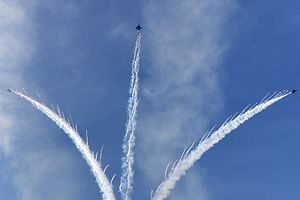On July 4, Singapore officially announced that its new air defense system had attained full operational capability status. The development marked yet another milestone in the city-state’s ongoing efforts to boost its air defenses in response to continued security challenges it faces.
The Republic of Singapore Air Force (RSAF) has long been looking to boost Singapore’s air defense systems as part of the city-state’s ongoing efforts to maintain its security amid a range of challenges (See: “What’s Behind Singapore’s New Defense Budget Numbers?”). As part of that effort, Singapore had acquired the Surface-to-Air Python 5 and Derby (Spyder) system ground based air defense system, produced by Israeli firm Rafael in 2011, to serve as a gradual replacement from its Rapier system from BAE Systems that had served it for over three decades.
The Spyder system has been said to constitute an improvement from the Rapier system in various ways, including in terms of range, altitude, and spectrum of threats addressed. Since then, it has been gradually incorporated into Singapore’s Enhanced Island Air Defense System as part of a transition process that has included developing new doctrines and procedures, integrating systems, and testing and deploying it, including at its first overseas exercise at Exercise Cope Tiger in 2014.
On July 4, Singapore officially announced that the Spyder system had attained full operational capability status in another milestone in its development and integration. The announcement, which came just days after Singapore Armed Forces (SAF) Day on July 1 and during the year that the RSAF is commemorating its Golden Jubilee, was made during a ceremony at Chong Pang Camp (See: “Singapore’s Air Force at 50”).
The ceremony was attended by officials and SAF personnel including Senior Minister of State for Defense Mohamad Maliki bin Osman, Chief of Defense Force Melvyn Ong, and Chief of Air Force Mervyn Tan. In his remarks at the ceremony, Maliki placed the milestone in Singapore’s air defense system in the broader context of Singapore’s ongoing defense modernization process and its threat environment, recalling that protection of the skies was crucial given Singapore’s status as a regional and global hub and in the wake of some recent incidents, including an alleged bomb threat in April.
































